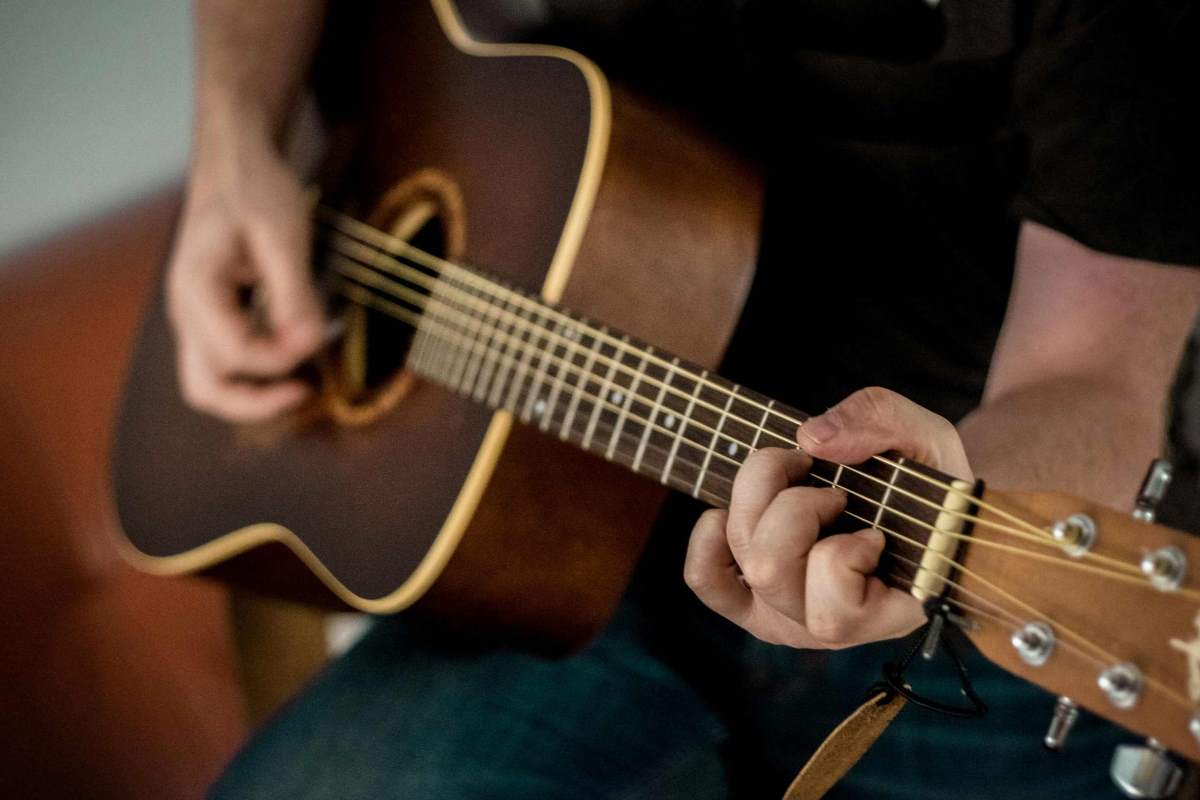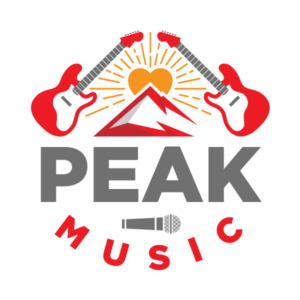How to Use Music Theory for Guitar: Learning Guitar Chords for Beginners and Intermediate Players
Learning chords on the guitar can be approached in several ways. Most guitar teachers start with shapes and visual diagrams. While this is a fast start method, it is limited. Memorizing hundreds or thousands of individual shapes and the ways they can be used together is a way to start and rapidly overwhelm the guitar student with details. When sitting in front of a chord encyclopedia and seeing 30 pages of A chords most students opt out and feel inadequate.
How do you use music theory for guitar to avoid memorizing shapes? While it may seem harder at first but will help guitarists integrate shapes and theory that allows guitar players freedom over the fretboard and the capability to actually play music at a high level. This approach will vary depending on individual learning styles. However, for the guitarist who wants to play music at a high level and express their unique style, this is a recommended path for earning guitar chords for beginners and intermediate players. The following will only cover major chord construction. Start here and as the major scale is used for reference for all guitar chords.
The basics: Each guitar fret is a note. These notes (12 in a row) comprise a chromatic scale which is one note right after the other. For example, C, C#, D, D#, E, F, F#, G, G#, A, A#, B. If you cut those 12 notes down to seven with intervals (frets between notes W=2 frets and H=1 fret), you get the diatonic scale : START NOTE : W W H W W W H The previous gives us the Do, Re, Mi, Fa, Sol, La, Ti ‘major’ scale. Starting at middle C (fret 1 string 2 on the guitar), this is C, D, E, F, G, A, B. The next note is C….it starts over at a higher octave.
Chord Construction : Chords are built ‘basically’ by selecting a starting note and taking every other note, this gives us ‘triads’. For example, from C D E F G A B, if we start at C and construct a triad of three notes we get : C D E F G A B a C Major Chord. CEG. If we continue with this, we get 7 chords from seven starting notes:
C Major : C E G
D minor : D F A
E minor : E G B
F Major : F A C
G Major : G B D
A minor : A C E
B minor flat 5 : B D F
All major scales can be constructed using the above method and intervals. All major scales corresponding chords go in this order: major chord, minor chord, minor chord, major chord, major chord, minor chord, minor flat 5 (don’t worry about this one right now!). See how this works with the above sequence.
Letters in bold are notes. W or H indicate whole or half steps. Remember, a whole step has one fret in between. A half step is when the frets are right next to each other.
C-W-D-W-E-H-F-W-G-W-A-W-B-H-C ( H=C starts again at a higher octave)
Read through the above once a day. Experiment. Find the notes. Try and play a triad. Listen to how they sound. Once you start to understand the above then continue your guitar journey. This is truly how to ow to se music theory for guitar: Learning guitar chords for beginners and intermediate players.
Begin to learn the fretboard: Fully take advantage of this, learn the notes on the fretboard, and please know this will take time. Don’t get too frustrated! A little frustration is OK but too much will cause you to stop. For example, find all of the Cs on the fretboard. Put on a metronome and find the Cs at 30 bpm. Once you can do that, increase the speed playing the Cs accurately. You should only do this 5 minutes a day. Next day, find the Ds (don’t worry about sharps or flats right now) and quickly review the Cs. Then move on to D using the same method.
Memorize chord shapes: Focus on memorizing the finger positions for each chord after you have a basic understanding of how they are constructed. Visualize the shape of the chord and the placement of your fingers on the fretboard. This will help you transition between chords more efficiently.
Use chord diagrams: Chord diagrams are visual representations of where to place your fingers on the fretboard to form a specific chord. They are widely available online or in guitar books. Study chord diagrams and practice playing the chords they represent.
Play along with songs: Find songs that use the chords you’ve learned and practice playing along with them. This will help you apply the chords in a musical context and improve your rhythm and timing.
Practice chord progressions: Instead of focusing solely on individual chords, practice common chord progressions. For example, the I-IV-V progression (e.g., C-F-G) is commonly used in many songs. Practice transitioning smoothly between these chords and explore different progressions.
Experiment with barre chords: Once you’re comfortable with open chords, venture into learning barre chords. Barre chords involve using a finger to hold down multiple strings on a single fret. They allow you to play chords all over the fretboard and expand your playing options. Don’t get too frustrated. This takes time to build up the strength in your hands.
Practice regularly: Consistency is key. Set aside regular practice sessions to reinforce your chord knowledge and improve your muscle memory. Start with a few minutes each day and gradually increase the duration as you progress. Playing chords is learning in movement, not knowledge. YOU MUST GET THE CHORDS UNDER YOUR FINGERS!
Always return to how chords are constructed. If you TRULY understand this as you learn the patterns, you can eventually forget the patterns and play freely—without charts, graphics, or other limitations! If you want assistance with the above using proven methods, contact us at Peak Music Studios for your fast track to guitar playing!
Peak Music serves clients in Albany, Troy, Clifton Park, Watervliet, Cohoes, Waterford, Latham, Colonie, Niskayuna and other communities in the Capital District. Complete a form for guitar, voice, or kids voice, and you will be contacted with further information about how Peak Music Studios can help you increase your confidence to help you reach your musical goals.








